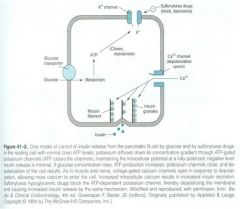![]()
![]()
![]()
Use LEFT and RIGHT arrow keys to navigate between flashcards;
Use UP and DOWN arrow keys to flip the card;
H to show hint;
A reads text to speech;
12 Cards in this Set
- Front
- Back
|
IgM
|
Activation of complement, can exit as a pentamer.
|
|
|
IgD
|
Present on naïve B cells
|
|
|
IgG
|
Neutralization and opsonization, small and thus easily diffuses.
|
|
|
IgA
|
Neutralization, transports to epithelium.
|
|
|
IgE
|
Sensitization of mast cells, very low serum levels under normal conditions.
|
|
|
Somatic hypermutation
|
the process of randomly introducing single nucleotide substitutions in the rearranged V regions of heavy and light chain genes. It is an additional means of creating diversity.
|
|
|
Immunoglobulin diversity is first generated by _____.
|
somatic recombination. This depends on the number of gene segments available for random recombinations.
|
|
|
Recombination activating genes (RAG-1 and RAG-2)
|
mediate joining of gene segments but also allow addition of P nucleotides, generating more diversity
|
|
|
TdT
|
adds N nucleotides randomly to generate more diversity.
In the rearranged heavy-chain locus, the and C regions are closest to the V region and naïve B cells can only express IgM and IgD. |
|
|
Isotype switching
|
occurs after a B cell encounters antigen. It relies on recombination between switch regions
|
|
|
class switching
|
Antibody genes re-organize; it changes the base of the heavy chain to another, creating a different isotype of the antibody that retains the antigen specific variable region. This allows a single antibody to be used by several different parts of the immune system.
|
|

|
This figure shows insulin secretion from pancreatic beta cells. When blood glucose elevates, it leads to increases in its uptake into the pancreatic beta cells via glucose transporters. Glucose will then be metabolized and ATP is formed within these cells. There are potassium channels on the pancreatic beta cells that are ATP-sensitive, i.e., an increase in the level of ATP leads to the closure of these channels, thereby leading to depolarization of the cell followed by opening of voltage-gated calcium channels and subsequent release of insulin (recall the process of exocytosis and release of a chemical transmitter).
|

